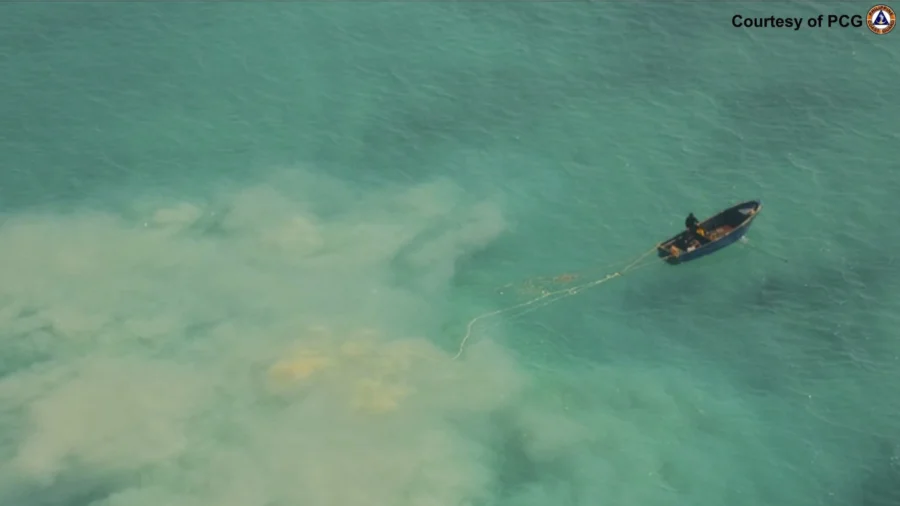The Philippines and the U.S. ambassador to the Philippines on Saturday urged the Chinese regime to stop “provocative and dangerous actions” in the South China Sea following the second mid-air flare incident in a month.
Philippine officials accused the Chinese military of harassing a Philippine fisheries plane and firing flares at the aircraft last week following a similar incident earlier this month.
The Japanese ambassador also voiced opposition to “any actions which increase tensions and endanger the lives of crews.”
Territorial disputes between the Philippines and the communist-ruled mainland China have intensified over islands in parts of the South China Sea, which the Philippines calls the West Philippine Sea.
On Saturday, the Philippine’s interagency National Task Force for the West Philippine Sea (NTF-WPS) said flares were dropped at and near a Philippine aircraft on two separate days over the past week.
“On August 22 … the People’s Republic of China (PRC) launched flares from their militarized reclaimed island in Zamora Reef, within the territorial sea of Pag-asa Island,” the task force said in a statement, using the official acronym of China under the rule of the Chinese Communist Party.
Zamora Reef, also known as Subi Reef and Zhubi Reef, is an atoll in the Spratly Islands. Pag-asa Island is also known as Thitu Island or Zhongye Island.
The NTF-WPS said the flares were fired “unjustifiably” when the Philippine aircraft was conducting a routine patrol with the Philippine Coast Guard to monitor and intercept foreign poachers.
It also said a Chinese fighter jet fired flares at the same aircraft on Aug. 19 near the Scarborough Shoal “at a dangerously close distance of approximately 15 meters.”
“The Chinese fighter jet was in no way provoked, yet its actions demonstrated hazardous intent that jeopardized the safety of the personnel onboard the BFAR aircraft,” the statement reads.
The task force, which consists of the Department of National Defense, the Armed Forces of the Philippines, and the Philippine Coast Guard, reiterated the call for the Chinese regime to “cease all provocative and dangerous actions that threaten the safety of Philippine vessels and aircraft, which it said were “engaged in legitimate and regular activities within Philippine territory and Exclusive Economic Zone.
It also said Beijing’s actions “undermine regional peace and security, and further erode the image of the PRC with the international community.”
US, Japanese Ambassadors Condemn Escalation
In a statement posted on social media platform X, U.S. Ambassador MaryKay Carlson said: “The [United States] stands firmly with the [Philippines] in condemning the PRC for launching flares at [Philippine] aircraft operating legally near Scarborough and Subi Reefs Aug. 19 & 22. With the [Philippines], we call on the PRC to cease provocative and dangerous actions that undermine a #FreeAndOpenIndoPacific.”
Also posting on X, Japanese Ambassador Endo Kazuya said Japan “opposes any actions which increase tensions and endanger the lives of crews,” upholds rules-based order and peaceful settlement of disputes based on international law.
The Chinese regime did not issue a statement over the accusations.
The incidents followed a series of skirmishes between Beijing and Manila this month over the disputed islands.
On Aug. 12, Philippine Foreign Secretary Enrique Manalo said the country would file a diplomatic protest with China over flares dropped in the fight path of a Philippine patrol plane on Aug. 8.
The Chinese air force accused the Philippine aircraft of intruding Chinese airspace and said its actions were “professional, standard, justified, and lawful.”
On Aug. 19, China and the Philippines blamed each other after their coast guard vessels collided.
The Philippines said that dangerous maneuvers by two China Coast Guard vessels resulted in damage to two Philippine Coast Guard vessels. The China Coast Guard said that a Philippine vessel deliberately rammed into a Chinese vessel.
From The Epoch Times

